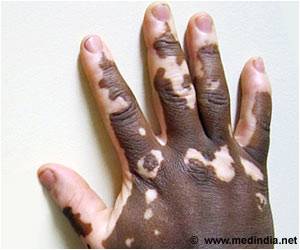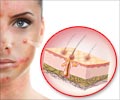Is there a cream for treating vitiligo? A new medicated cream applied directly on the skin can help restore skin pigmentation in vitiligo patients.
- Vitiligo is a condition that involves loss of pigment (depigmentation) in patches of skin
- Depigmentation of the skin caused by vitiligo is not harmful, but many people feel embarrassed
- If you want to regain lost skin colour, FDA has approved FDA Opzelura (ruxolitinib) cream for patients above 12 years of age
TOP INSIGHT
The U.S. Food and Drug Administration-approved Ruxolitinib cream for vitiligo is a milestone in overcoming disease that has no approved treatments.
More than one-third of adults and more than 50% of adolescents in the study said their vitiligo was no longer noticeable or a lot less noticeable after a year.
What is the Best Ointment for Vitiligo?
Vitiligo is an autoimmune disease that occurs when the body misfires against its own skin cells, it can be mild or severe and found anywhere on the body, although it typically affects the face and hands. Vitiligo affects people of all skin types but is often more noticeable in people with darker skin.Two studies included in the new analysis involved more than 670 people with vitiligo from 70 centers, primarily in North America and Europe. There were no differences in responses based on race, ethnicity, duration of disease, and/or the amount of vitiligo, among other factors[2].
Even patients with vitiligo for over 30 years can still improve with this treatment. Before the new cream’s approval, dermatologists used topical steroids, topical calcineurin inhibitors, and phototherapy to treat vitiligo.
Potential Uses of New Drug in Vitiligo Treatment
Topical ruxolitinib caused only mild side effects, including redness and irritation at the application site and mild acne in this study. The medication does carry a black box warning from the FDA due to a small increased risk of serious infections, major heart issues, clotting, cancer and even death[3].This warning is based on studies of oral ruxolitinib, which results in much higher blood levels than the cream. The study was funded by Incyte Corp., which produces ruxolitinib. It was published in the New England Journal of Medicine.
This disease can take a dramatic toll on self-esteem. Half of all patients with vitiligo are diagnosed before the age of 20, and in the pediatric population, teasing, bullying, self-consciousness and embarrassment have been issues for patients.
Vitiligo is one of the most significant psychosocial diseases with an impact on quality of life similar to chronic asthma, and rates of depression are much higher than in the general population.
Without knowing how well a medication can work in a large group and also how safe it is, [and] we have that information now and that is a tremendous hurdle to overcome for a disease that had no approved treatments.
Topical treatment targets the affected sites directly and lowers the risk of systemic effects. Patients with vitiligo finally have the hope of efficient treatments, with several new immuno-modulating drugs in different phases of clinical trials.
References:
- U.S. Food and Drug Administration.(https://www.fda.gov/drugs/news-events-human-drugs/fda-approves-topical-treatment-addressing-repigmentation-vitiligo-patients-aged-12-and-older)
- Garg BJ, Saraswat A, Bhatia A, Katare OP. Topical treatment in vitiligo and the potential uses of new drug delivery systems. Indian J Dermatol Venereol Leprol 2010.(https://ijdvl.com/topical-treatment-in-vitiligo-and-the-potential-uses-of-new-drug-delivery-systems/)
- U.S News and World Report.(https://www.usnews.com/news/health-news/articles/2022-10-24/topical-cream-may-restore-skin-pigmentation-in-people-with-vitiligo)
Source-Medindia
 MEDINDIA
MEDINDIA





 Email
Email










